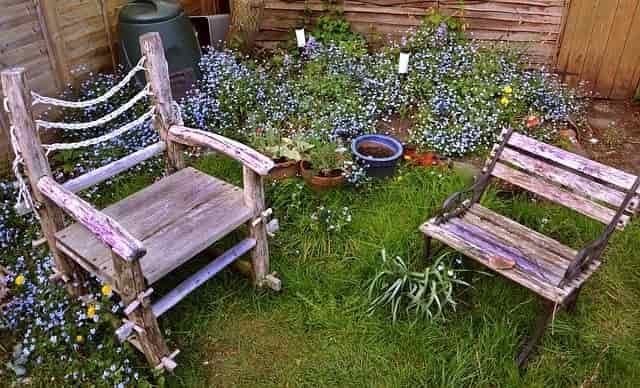With winter nearly over, creating a to-do list for reviving your lawn is something that you should be doing now. You have to create a plan for nursing your turf and plants back to health, so that you will have an attractive outdoor space come spring and summer.
Checking the condition of your plants is one of the first things you have to do when assessing how much damage your lawn took during winter. Due to the cold and frost, you have to expect that not all of your prized foliage will come out unharmed.
Are Your Plants Really Dead?
The first and most noticeable sign that a plant is dying or nearly dead is if it has turned brown. However, lawn care pros in Mason, Ohio say that even if your foliage has taken on this color, it doesn’t mean that it is beyond saving.
To determine if a plant truly is dead and no longer worth saving, try these steps first:
1. Perform the snap-scratch test
If you are worried that a plant is dying, start checking its health by finding a broad enough stem or twig and bending it back. If it twists easily and eventually splits, it is still alive.
However, if the twig snaps cleanly immediately upon bending it and the inside is dry, the plant is dead.
If the plant in question is a tree, after snapping a twig, proceed to the scratch test. Scrape the bark using a knife or your fingernail. If the bark feels moist and there are some green elements underneath the scuffed area, the tree is still alive.
However, if you are finding it hard to scrape off even a small part of the bark and the part underneath the area you removed is mostly brown, then the tree is dead.
2. Check the roots
If a potted or young plant has brown leaves and some have already fallen off, find out if you can still save it by checking its roots.
Pull the plant out and check if it is mushy and has a bad smell. If it has these qualities, it is dead.
But if the roots do not look mushy and seem light and supple and have no bad smell, the plant may have both dead and healthy roots. A root rot treatment can bring this foliage back to life.
3. Assess the buds
Lastly, if you are concerned about a flowering plant, look at the buds. If these appear to be withered, off-color, and limp, it is already dead. But if they look plump and are starting to swell, the plant can still be saved.
Additionally, look at the stems. If most of the buds look plump and healthy, the plant is still alive.
How Can You Revive a Dying Plant?
The first step to resuscitating a near-dead plant is to find out the cause of the damage.
Below are the usual reasons why plants die and how you can revive them:
1. The cause: overwatering
Because of the cold and wet season, the usual main reason behind the poor condition of some of your plants is overhydration. The most obvious sign that it is over-watered is the presence of yellow leaves.
To bring your foliage back to life, repot it in dry soil. Make sure the pots have a few holes in the bottom or a layer of lava rocks or recycled terracotta shards, which can absorb excess water and release it.
Additionally, water the repotted plant when necessary.
Once the weather becomes warmer, you can start watering the plant more frequently.
2. The cause: underwatering
Failing to water your plants sufficiently can also cause them to die. If the leaves are droopy, turning brown, and falling out, take it as a hint that your plants need to be hydrated.
To properly hydrate dry plants and nurse them back to health, make sure you saturate the soil when watering them. It should be evenly moist, so that water can reach the roots.
To know if the plant is still not getting enough water, stick your finger into the soil. If you feel that the center of the root ball is dry, you are still under-watering it.
However, be careful of over-watering it as well. Let the soil dry out before giving it a good soak again.
3. The cause: overexposure to sunlight
If the leaves look dull and bleached out and have brown edges and spots, it often means that your plant is getting too much sunlight.
Move the plant to a shadier part of your lawn if it is potted. If you are fond of it, consider turning it into a house plant so that you can shield it adequately from sunlight. It will also benefit from the humidity inside your home.
If you are worried about your ground plants, repot them and move them to a shaded area of your yard. However, if you can’t transfer them, use shade cloth or set up a portable plant screen to shield them whenever the sun is too warm.
When Should You Fertilize Your Dying Plant?
Another crucial element of reviving dead plants is fertilizing them correctly.
Lawn care providers say that giving unhealthy plants the right fertilizer can help them recover within days. In case they are near-dead, you may need to wait a bit longer to see some changes.
To hasten plant recovery, you have to know what nutrients your foliage needs so that you can use the most appropriate and helpful product.
Additionally, hold off applying any fertilizer until the plant has recovered a bit. If you do it prematurely, you will end up injuring their tender roots, which will cause more damage.
Once the plant is reviving a bit, apply an all-purpose, slow-release nitrogen fertilizer. This type of fertilizer contains the nutrients your foliage needs to get back to health.
To use slow-release nitrogen fertilizer, add it to the watering can and use it to hydrate your dying plant.
Reviving dying plants after winter requires a lot of time, effort, and patience. If you have a lot of plants to resuscitate, it would be best to let lawn care specialists handle this tiring and time-consuming task.
Few Hand Picked articles for you
Lights for your Home
Furniture Restoration
Kitchen Layouts
Kitchen ideas
Wall Art Ideas
Carpet Cleaning Tips
Home redecoration
Areas to use ceramic tiles
Living room interior design ideas
Home theatres worth the investment
Designer Bathroom Accessories


